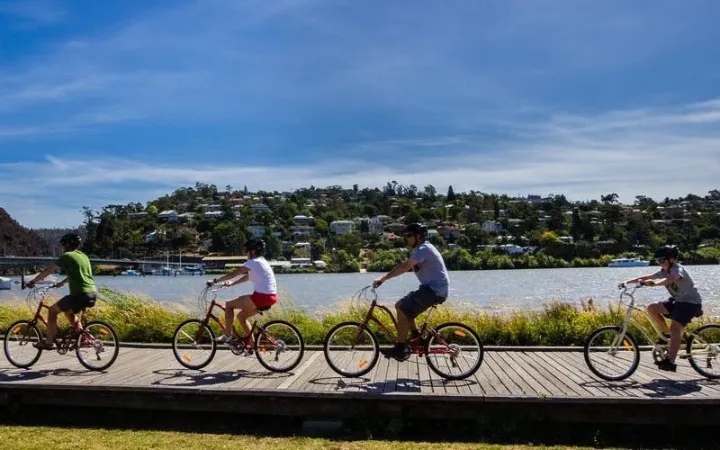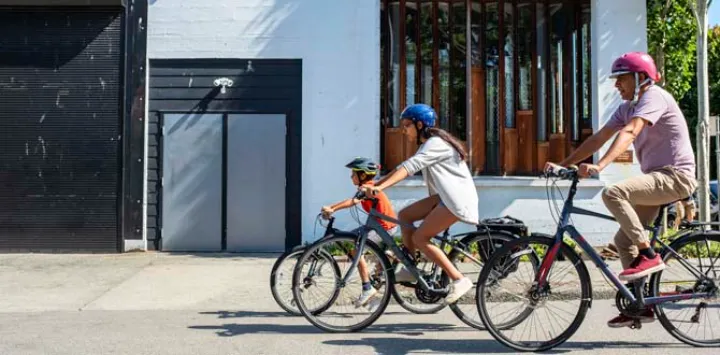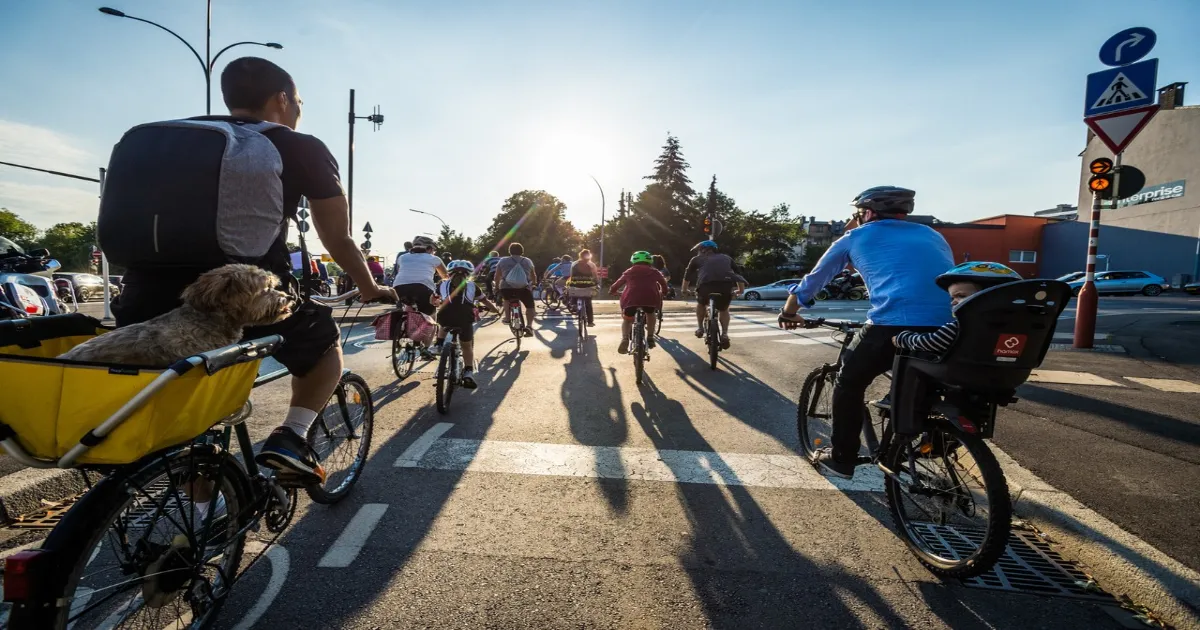Map all the existing and potential routes for bike paths that are nowhere near cars against the redundant industrial sites those bike paths could unlock for bicycle-oriented redevelopment. For about a year now, I’ve hypothesized that that is the first planning step toward making bicycling oases in cities otherwise overridden by cars. The cities we have created make driving too easy and cycling too hard, with preference given to driving in every decision by planners, architects, and road engineers. The sites revealed when we map bike routes against potential redevelopment sites provide the best opportunity to do something different: to make districts where cycling is easy and driving is hard.

The red lines on this map of the friendly town Launceston Tasmania are off-road bicycling routes that either exist now or that could be built with no opposition from drivers for the price of some asphalt. Black (roughly) indicates land vacated by the industry that could be developed with cycling as the main mode of transport.

This mapping exercise will often bring into focus a picture of a city in its industrial heyday, and it certainly has done in this case. Rail lines brought goods from the East to the docklands to be loaded onto boats transported by river. Immediately downwind from those docklands, workers built cottages in the area marked Invermay on this map. Civic buildings and up-market residences were built away from the industrial din, on high ground South of the river.
You could say it’s a pity that industrial land can no longer be used for industrial functions. Still, I would argue that bicycling districts are engine rooms of a new kind of industry: the knowledge economy. Bikes are conversation starters, like dogs. And because cyclists are mobile yet can park at the door, they can squeeze more social engagements into their days. All this means cyclists can better meet to exchange and develop ideas. Bike cities like Copenhagen and Amsterdam, and emerging bike cities like Portland, Oregon, or New York, stimulated cycling because they are creative and creative centers because they have cycling. So don’t mourn industrial lands being developed with new apartments, bars, and cafes if their ground planes are inviting to cycling. Yuppies coming by bike could be developing intellectual property for export, even if it’s to get drunk. If the land is not used for places of meeting, it will only be used for places to buy mulch for your garden and outdoor furniture that is close to being mulched anyway.
The opportunity for doing something truly healthy and green around bicycle transport has been thwarted in places like the South Yarra district of Melbourne, London’s Isle of Dogs, and Darling Harbour in Sydney. It is rare to find former docklands completely undeveloped like the port lands in Launceston. In rapidly developing cities, sites like this already have new apartment blocks and entertainment facilities. But they also have a lot of camouflaged parking behind and underneath the new buildings. Sure, waterfront promenades and possibly trails along former rail routes will make cycling a natural way for some to get around in these places. However, mass reliance on cycling has not been planned so that it won’t happen. Promenades have been designed by architects who were thinking about walking, not cycling. The spaces resulting often make cyclists feel as though they’re not welcome—especially when they see a “no cycling” sign.
Launceston is lucky that its docklands provide a blank canvas but unlucky to have no population growth to drive new development. We have the blank canvass, but we don’t have any paint. Launceston doesn’t even have a great shortage of centrally located affordable housing, at least not to the extent seen in bigger cities. Any plan made in this city must be viewed as long-term propositions, presented now to protect the city from expedient decisions that may limit growth in the future.

One thing that will create significant demand for new housing in this city, one day, will be the failure of the existing housing stock to cope with rising energy prices. Having outgrown its hydropower capacity, Tasmania relies yearly on coal power cabled under Bass Straight from mainland Australia. The cost of heating Launceston’s old weatherboard cottages is already high and will only worsen. Worse still will be the cost of vehicular transport in a city that not only sprawled outward in the 50s and after that but upwards as well, to the tops of steep hills. Every trip from a house with a view to the valley below brings with it the certainty of lugging a tonne of steel car back up that hill to one or two hundred meters elevation. Think of the energy it would take to hand-winch a car 100 meters into the air, then ask yourself if hilltop sprawl can be sustained as fuel prices continue to rise.
The need for low-energy housing and low-energy transport will create demand for development down on the flat lands. I can foresee a gradual shakedown of property values from the hills to the valleys.

A quick recap of the argument developed thus far. With the first part of this saga, I argued that these small to medium-scale “fool’s paradise” cities (that typify human settlement) frustrate those of us seeking healthy green lifestyles in megacities. Sydney, New York, London, New York, and Paris are on their way to becoming quite liveable with fewer cars and safe bicycle infrastructure. Some of us in regional cities also want healthy green lifestyles, just not as urgent, because driving and low-density living still work more or less.
With this installment, I’ve shown how a mapping process that I’ve applied to several cities so far draws attention to Launceston’s old docklands as a site to do something other than the car-oriented development we are accustomed to seeing. With one of these blog posts, I will need to break up this huge site I have identified into viable separate developments reliant on bicycle transport.

